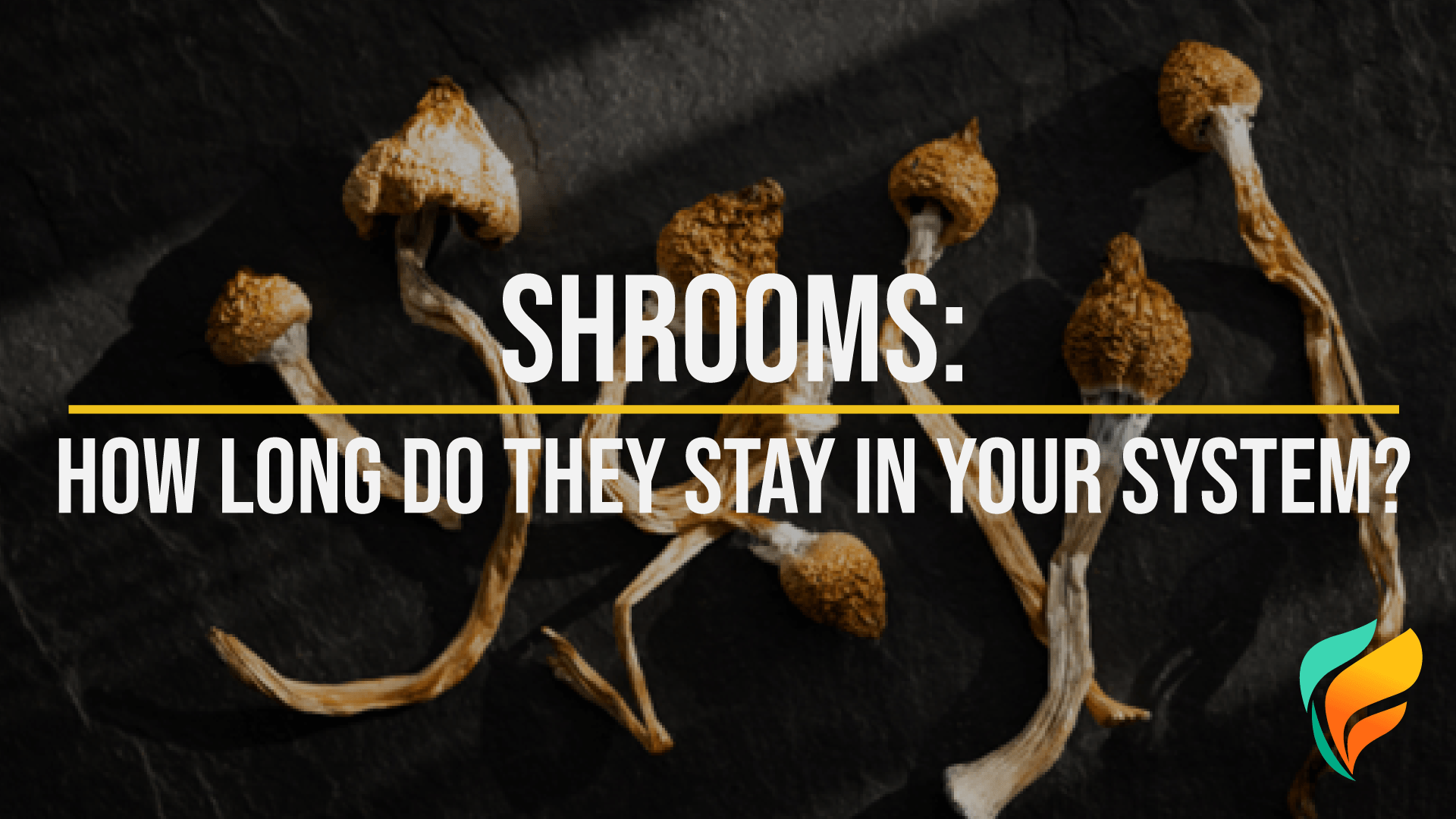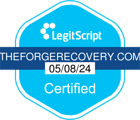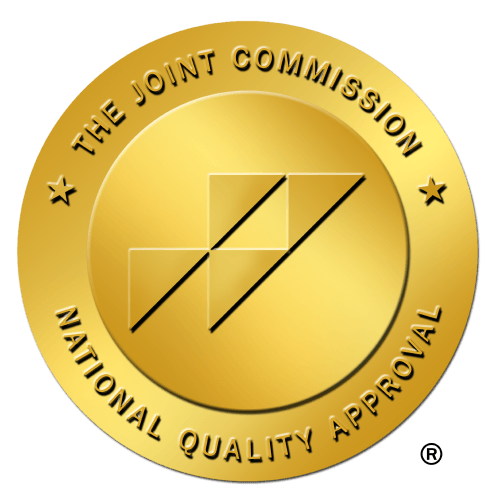Shrooms: How Long Do Shrooms Stay in Your System, Effects, and More


How long do shrooms stay in your system? We answer this question in our blog. Learn more about magic mushrooms and their risks here!
Shrooms, or magic mushrooms, refer to fungi containing the psychoactive compound psilocybin. Psilocybin is the reason for the hallucinogenic effects experienced when consuming these mushrooms.
It's important to use mushrooms carefully, be aware of any hazards, and consider legal factors. Psychedelic usage should be approached cautiously and with respect to safety precautions and local legal requirements because they can significantly affect perception, cognition, and emotions.
One question we frequently hear is how long do shrooms stay in your system?
Stats About Shrooms:
According to data from the National Center for Biotechnology Information, the US had 32 million lifetime users of psychedelics in 2010, with 17% of those users between the ages of 21 and 64 (22% men and 12% women).
What Is the Half-Life of Shrooms?
The half-life of a substance is the time it takes for half of the initial amount of a substance to be metabolized or eliminated from the body. In the case of psilocybin, it undergoes metabolic processes and is converted into psilocin, which causes psychedelic effects. Therefore, when discussing the half-life of shrooms, we’ll refer to the half-life of psilocybin.
The half-life of psilocybin depends on several factors, including individual metabolism, dose, route of administration, and other physiological factors. After the initial dose of psilocybin, it takes approximately 1 to 2 hours for the concentration of psilocybin to be reduced by half.
While the half-life of psilocybin is relatively short, the effects of shrooms can last much longer. This is because psilocin, the metabolite of psilocybin, also has psychoactive properties and can extend the duration of the experience. The effects of shrooms typically begin within 20 to 60 minutes of ingestion and can last between 4 to 6 hours.
How Long Can Shrooms Stay in Your System?
The detection of shrooms or their active compounds, such as psilocybin and psilocin, in the system can be challenging compared to the detection of other substances. This is primarily due to the relatively short half-life of psilocybin and psilocin and the fact that specialized tests are required to detect these substances.
Are You Struggling with Mental Health or Addiction?
We Can Help. Call Us Now!
CALL: 877-839-1772
Shrooms: Magic Mushrooms & Drug Tests
Here are the common methods used for detecting shrooms in the system:
Urine Drug Test for Shrooms
Urine drug tests are the most commonly used method for drug screening due to their cost-effectiveness and non-invasiveness. Psilocybin and psilocin have a short half-life and are rapidly metabolized and eliminated from the body.
As a result, urine drug tests are typically not designed to detect psilocybin or psilocin. In standard drug tests, psilocybin and psilocin are not included, and shrooms are unlikely to be detected through a routine urine test.
Blood Drug Test for Shrooms
Blood tests have a shorter detection window than urine tests. After consuming shrooms, psilocybin is quickly metabolized into psilocin, and both compounds are rapidly absorbed into the bloodstream.
Blood tests are more invasive and expensive and typically reserved for specific cases, such as accidents or medical emergencies.
Hair Drug Test for Shrooms
Hair tests have a longer detection window than urine and blood tests. Hair tests are typically used to detect long-term drug use patterns and are more suitable for detecting substances with longer half-lives that accumulate in hair follicles over time.
The detection of shrooms in the system is not a routine procedure, and drug tests for psilocybin and psilocin are less common compared to tests for substances like cannabis, opioids, or amphetamines. Drug tests are usually designed to target more prevalent substances and pose a higher risk to public health.
How Do Shrooms Work?
Shrooms, or magic mushrooms, contain psilocybin and psilocin and have hallucinogenic effects. When consumed, these compounds interact with specific receptors in the brain, leading to various psychological and perceptual changes. Various methods through which shrooms work are:
Ingestion
Shrooms can be consumed orally by eating the dried mushrooms directly or brewing them in tea. After ingestion, the compounds are absorbed into the bloodstream through the gastrointestinal tract.
Conversion to Psilocin
Psilocybin is rapidly converted to psilocin by the enzyme alkaline phosphatase.
Serotonin Receptor Interaction
Psilocin is a partial agonist for serotonin receptors, particularly the 5-HT2A receptors. It binds to these receptors and affects the transmission of serotonin, a neurotransmitter that regulates mood, perception, and cognition.
Disruption of Neural Pathways
Psilocin's interaction with serotonin receptors disrupts normal neural pathways and alters the communication between different brain regions. This disruption primarily affects the prefrontal cortex, which is involved in decision-making, perception of time, and self-awareness.
Increased Brain Connectivity
Shrooms can enhance the connectivity between different brain regions that are usually not strongly connected. This increased connectivity can lead to novel connections and thought patterns, contributing to the unique and often surreal experiences of shroom trips.
Altered Perception and Cognition
The effects of shrooms can differ widely but often include changes in perception, such as visual distortions, intensified colors, and patterns. Users may also experience alterations in their thoughts, emotions, and sense of self. Shrooms can induce introspective and introspective states, profound insights, and a sense of interconnectedness.
Duration and Aftereffects
The effects of shrooms typically begin within 20 to 60 minutes after ingestion and can last for several hours, usually around 4 to 6 hours. The intensity and duration of the experience depend on factors like dosage, individual sensitivity, and set setting (mindset and physical environment).
While shrooms can produce profound and potentially therapeutic experiences, they also carry risks. The effects of shrooms can be unpredictable, and individuals may have different reactions and tolerances. Psychological distress, anxiety, and potential risks to mental health can occur, particularly in individuals with a predisposition to psychiatric disorders.
Are You Struggling with Mental Health or Addiction?
We Can Help. Call Us Now!
CALL: 877-839-1772
What Are the Symptoms of an Overdose of Shrooms?
While shrooms have a relatively low potential for overdose compared to other substances, consuming large amounts or extremely potent varieties of mushrooms can lead to an overdose-like scenario. An overdose of shrooms can cause a range of symptoms, which may vary depending on factors such as the individual's sensitivity, the dose taken, and the potency of the mushrooms.
Here are some potential symptoms of an overdose or an adverse reaction to shrooms:
Intense Hallucinations
Excessive shrooms can lead to intense and overwhelming hallucinations. Visual, auditory, and sensory distortions may become extremely vivid, chaotic, and challenging to comprehend or control.
Extreme Anxiety and Panic
High doses of shrooms can induce intense anxiety, fear, and paranoia. Users may feel overwhelmed and experience panic attacks or an acute sense of terror. These psychological symptoms can be distressing and may require immediate support.
Confusion and Disorientation
Overdosing in shrooms can cause severe confusion, disorientation, and an altered sense of reality. Users may have difficulty understanding their surroundings, communicating coherently, or distinguishing between the hallucinatory effects and actual reality.
Physical Discomfort
Physical symptoms can accompany a shroom overdose. These may include rapid heart rate (tachycardia), increased blood pressure, dizziness, nausea, vomiting, sweating, tremors, muscle weakness, and coordination difficulties.
Psychotic Symptoms
In rare cases, an overdose of shrooms can lead to psychotic symptoms such as delusions, paranoia, extreme agitation, and a loss of touch with reality. These symptoms may persist even after the acute effects of the drug have worn off and require medical attention.
Psychological Distress
An overdose of shrooms can induce profound psychological distress and emotional instability. Users may experience extreme sadness, despair, feelings of impending doom, or an inability to control their emotions.
What Are the Factors that Affect Addiction to Shrooms?
Some individuals may develop problematic use or psychological dependence on shrooms. Several factors can influence the potential for addiction or problematic use of shrooms. Here are some key factors:
Biological Factors
Genetic predisposition and individual differences in brain chemistry can influence susceptibility to addiction. Some individuals may be more vulnerable to developing addictive behaviors, including with substances like shrooms.
In addition, certain genetic variations and neurotransmitter systems may play a role in the addictive potential of substances.
Psychological Factors
Psychological factors can contribute to the development of addiction. People with certain personality traits, such as impulsivity, sensation-seeking, or a propensity for risk-taking, may be more likely to engage in problematic substance use, including shrooms.
In addition, individuals with underlying mental health conditions, such as depression or anxiety disorders, may be more susceptible to developing problematic patterns of shroom use.
Frequency and Dose
The frequency and dose of shroom use can impact the potential for addiction. Regular and frequent use of shrooms can increase the risk of developing a pattern of problematic use or dependence. Higher doses of shrooms may also be associated with a more intense and potentially addictive experience.
Set and Setting
The set and setting, which refers to an individual's mindset and physical environment during shroom use, can influence addiction potential. Using shrooms in an unsupportive or chaotic environment or with a negative mindset may increase the likelihood of developing problematic use patterns.
Conversely, using shrooms in a supportive, controlled, and intentional setting may reduce the risk of addiction.
Are You Struggling with Mental Health or Addiction?
We Can Help. Call Us Now!
CALL: 877-839-1772
Co-Occurring Substance Use and Mental Health Disorders
Co-occurring substance use disorders or mental health conditions can impact addiction potential. Individuals with a history of substance use disorders or those who use shrooms to self-medicate underlying mental health issues may be at higher risk for addiction.
Social and Environmental Factors
Social and environmental factors, such as peer influence, access to shrooms, and cultural attitudes toward shroom use, can also influence addiction potential. Exposure to social networks that normalize or encourage shroom use may contribute to developing problematic patterns.
Motivation and Intention
The motivation and intention behind shroom use can impact addiction potential. Using shrooms solely for recreational purposes or to escape reality may increase the risk of developing addictive patterns. On the other hand, intentional and controlled use for therapeutic or personal growth purposes may reduce the likelihood of addiction.
Treatment for Addiction to Shrooms
Treatment for addiction to shrooms, or problematic use of psilocybin-containing mushrooms, involves a combination of professional support, therapy, and lifestyle changes. Some of the treatment approaches commonly used are:
Assessment and Evaluation
The first step in treating shroom addiction is a thorough assessment and evaluation by a qualified healthcare professional. This involves gathering information about the individual's substance use history, physical and mental health, and any co-occurring conditions.
Detoxification
In cases where an individual is experiencing significant dependence or withdrawal symptoms, medically supervised detoxification may be necessary. This process helps manage withdrawal symptoms and ensures the individual's safety during the initial phase of treatment.
Individual Therapy
Individual therapy, such as cognitive-behavioral therapy (CBT) or motivational interviewing can effectively address the underlying factors contributing to shroom addiction. Therapy sessions aim to explore motivations, develop coping strategies, address triggers, and promote healthier behaviors.
Group Therapy and Support Groups
Group therapy or support groups can provide individuals with a supportive and understanding environment. Sharing experiences, learning from others, and receiving peer support can be instrumental in the recovery process. Groups such as Narcotics Anonymous (NA) or other substance-specific support groups may be beneficial.
Dual Diagnosis Treatment
If an individual has co-occurring mental health disorders, such as anxiety or depression, an integrated treatment that addresses both substance use and mental health concerns may be necessary. This is called a dual diagnosis. Treating a dual diagnosis often involves combining therapy, medication, and other evidence-based approaches.
Holistic Approaches
Complementary and holistic approaches can be integrated into treatment plans to support overall well-being. This may include mindfulness, meditation, yoga, art therapy, or exercise, which can help reduce stress, improve self-awareness, and promote a healthier lifestyle.
Aftercare and Relapse Prevention
Developing a comprehensive aftercare plan is crucial to maintaining recovery from shroom addiction. This may involve ongoing therapy, participation in support groups, establishing healthy routines, and making positive lifestyle changes. In addition, learning relapse prevention strategies and having a support system can help individuals stay on track and prevent relapses.
Are You Struggling with Mental Health or Addiction?
We Can Help. Call Us Now!
CALL: 877-839-1772
Tired of Shrooms? The Forge Treatment Center Will Help You Leave Psychedelic Drugs Behind
The Forge Treatment Center provides comprehensive treatments that help people overcome habitual shrooms use. Our highly experienced addiction professionals, therapists, and counselors work together to offer customized treatment for their specific needs.
In addition, we offer robust aftercare and counseling services. The Forge Recovery Center is committed to helping you live your best life free from shrooms. If you’d like to know more about our shrooms treatment program, please reach out to The Forge Recovery Center today.
Are You Struggling with Mental Health or Addiction?
We Can Help. Call Us Now!
CALL: 877-839-1772




